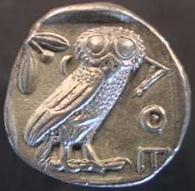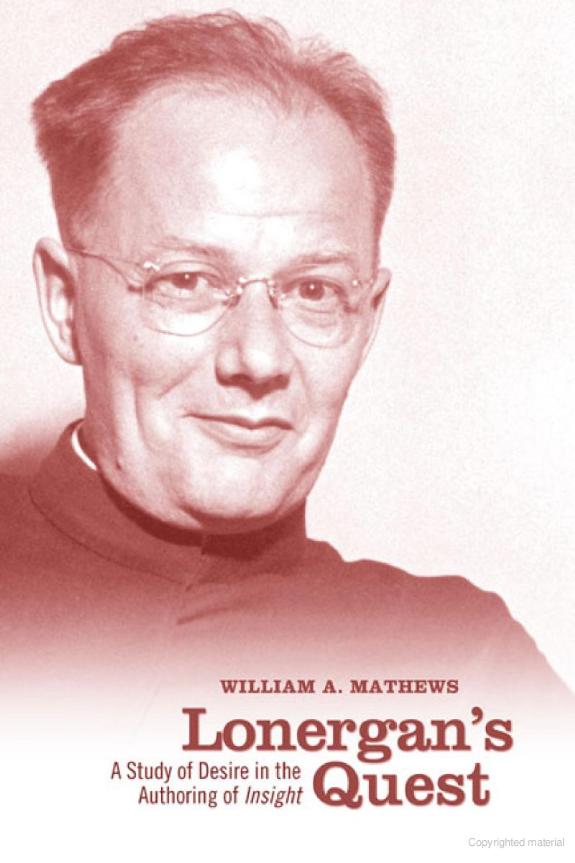
AnthonyFlood.com
Philosophy against Misosophy

Bias, Liberation, and Cosmopolis
Bernard J. F. Lonergan, S.J.
3. Intersubjectivity and Social Order
Though I just spoke of a functional unity to be discovered, really there is a duality to be grasped.
As intelligent, man sponsors the order imposed by common sense. But man is not a pure intelligence. Initially and spontaneously, he identifies the good with the object of desire, and this desire is not to be confused either with animal impulse or with egoistic scheming.
Man is an artist. His practicality is part of his dramatic pursuit of dignified living. His aim is not for raw and isolated satisfactions.
If he never dreams of disregarding the little matter of food and drink, still what he wants is a sustained succession of varied and artistically transformed acquisitions and attainments.
If he never forgets his personal interest, still his person is no Leibnizian monad; for he was born of his parentsí love; he grew and developed in the gravitational field of their affection; he asserted his own independence only to fall in love and provide himself with his own hostages to fortune.
As the members of the hive or herd belong together and function together, so too men are social animals and the primordial basis of their community is not the discovery of an idea but a spontaneous intersubjectivity.
Thus, primitive community is intersubjective. Its schemes of recurrence are simple prolongations of prehuman attainment, too obvious to be discussed or criticized, too closely linked with more elementary processes to be distinguished sharply from them. The bond of mother and child, man and wife, father and son, reaches into a past of ancestors to give meaning and cohesion to the clan or tribe or nation. A sense of belonging together provides the dynamic premise for common enterprise, for mutual aid and succour, for the sympathy that augments joys and divides sorrows.
Even after civilization is attained, intersubjective community survives in the family with its circle of relatives and its accretion of friends, in customs and folk-ways, in basic arts and crafts and skills, in language and song and dance, and most concretely of all in the inner psychology and radiating influence of women.
Nor is the abiding significance and efficacy of the intersubjective overlooked, when motley states name themselves nations, when constitutions are attributed to founding fathers, when image and symbol, anthem and assembly, emotion and sentiment are invoked to impart an elemental vigour and pitch to the vast and cold, technological, economic, and political structures of human invention and convention.
Finally, as intersubjective community precedes civilization and underpins it, so also it remains when civilization suffers disintegration and decay. The collapse of Imperial Rome was the resurgence of family and clan, feudal dynasty and nation.
Though civil community has its obscure origins in human intersubjectivity, though it develops imperceptibly, though it decks itself out with more primitive attractions, still it is a new creation.
The time comes when men begin to ask about the difference between φυσισ and νομος, between nature and convention.
There arises the need of the apologue to explain to the different classes of society that together they form a functional unity and that no group should complain of its lot any more than a manís feet, which do all the walking, complain of his mouth, which does all the eating.
The question may be evaded and the apologue may convince, but the fact is that human society has shifted away from its initial basis of intersubjectivity and has attempted a more grandiose undertaking.
The discoveries of practical intelligence, which once were an incidental addition to the spontaneous fabric of human living, now penetrate and overwhelm its every aspect.
For just as technology and capital formation interpose their schemes of recurrence between man and the rhythms of nature, so economics and politics are vast structures of interdependence invented by practical intelligence for the mastery not of nature but of man.
This transformation forces on man a new notion of the good. In primitive society it is possible to identify the good simply with the object of desire; but in civil community there has to be acknowledged a further component, which we propose to name the good of order.
It consists in an intelligible pattern of relationships that condition the fulfilment of each manís desires by his contributions to the fulfilment of the desires of others and, similarly, protect each from the object of his fears in the measure he contributes to warding off the objects feared by others.
This good of order is not some entity dwelling apart from human actions and attainments. Nor is it any unrealized ideal that ought to be but is not. But though it is not abstract but concrete, not ideal but real, still it cannot be identified either with desires or with their objects or with their satisfactions.
For these are palpable ad particular, but the good of order is intelligible and all-embracing. A single order ramifies through the whole community to constitute the link between conditioning actions and conditioned results and to close the circuit of interlocked schemes of recurrence.
Again, economic break-down and political decay are not the absence of this or that object of desire or the presence of this or that object of fear; they are the break-down and decay of the good of order, the failure of schemes of recurrence to function.
Manís practical intelligence devises arrangements for human living; and in the measure that such arrangements are understood and accepted, there necessarily results the intelligible pattern of relationships that we have named the good of order.
In a simple yet inexorable fashion, this order, originated by human invention and convention, ceases to be an optional adjunct and becomes an indispensable constituent of human living.
For the long-run effects of technological advance and new capital formation consist in some combination of increased population, reduced work, and improved living standards.
In the course of a century the differences in all three respects may be so great that any return to an earlier state of affairs is regarded as preposterous and is to be brought about only by violence or disaster.
But concomitant with the technological and the material development, there also takes place a complementary series of economic and political innovations.
Each of these is motivated, to a greater or less extent, by the underlying technical and material changes; each, sooner or later, undergoes the adaptations demanded by subsequent changes; and so at any given moment all together present a united front that can be broken only by the destructive turmoil of a revolution or a conquest.
Moreover, ideas have no geographical frontiers, and profits accrue to traders not only from domestic but also from foreign markets.
Material and social progress refuses to be confined to a single country; like an incoming tide, first it reaches the promontories, then it penetrates the bays, and finally it pours up the estuaries.
In an intricate pattern of lags and variations, new ideas spread over most of the earth to bind together in an astounding interdependence the fortunes of individuals living disparate lives in widely separated lands.